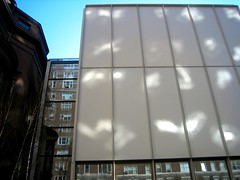
When a historic place captivates or enthralls me, I feel impelled to set out in search of its soul. The historic city is not a carefully designed entity, it simply is, and it exists independently of any carefully designed plan.
It came into being in the course of time and stands as absolute proof that historic centres are not devised by architects, but are instead the reflection of thousands of lives which have literally lived it into being. These centres are a city that we can only feel, perceive and savour.
The architect Renzo Piano, interviewed by Lodovico Folin Calabi, programme specialist at the UNESCO World Heritage Centre, in the most recent issue of UNESCO's World Heritage publication (No. 55).
Selfishly, I printed off the Piano interview because UNESCO used one of my photographs to illustrate the piece. Gratefully, I read it end to end, nodding deep and long as I came across passages like the one above and this one too:
Some of the centres that we most love are endowed with a form of beauty that touches us deeply and does so in rather the same way as might, for instance, a person who embodies our own roots, a relative who arouses great fondness in our hearts. This beauty is apparent in the spontaneous patterns of a historic city which coexist in perfect harmony with the millions of lives that have unfolded there.
It is a place which was built in time and so, with time, this plurality of lives becomes layered within the city and interwoven into it. It is a place on which everyone has left a trace.
These traces should not be erased out of some misguided sense of shame or fear. Rather, they should remain because they not only tell a story, they also provide the city with its sense of identity.
But you can read it for yourself -- it's a gem »






No comments:
Post a Comment